The last wild places on Earth
Wild nature is one of our planet’s greatest treasures. Tropical forests, coral reefs, Arctic glaciers and African savannahs are home to thousands of plant and animal species. They regulate the climate, provide us with oxygen, water and food, and protect us from the effects of natural disasters. Unfortunately, in the 21st century, it is becoming increasingly difficult to find places that have remained untouched by human activity. The pressure of civilisation, rapid economic development and climate change mean that the last wild areas are under threat as never before.
The history of the last wild places on Earth
The history of the degradation of the last wild places on Earth goes back hundreds of years, but in recent decades the problem has become particularly acute due to deforestation, urbanisation and climate change; since the 20th century, the rate of destruction of nature has increased significantly, leading to mass species extinction and the loss of entire ecosystems, with data indicating that more than 10 million hectares of tropical forests disappear every year, forcing animals and humans to leave their habitats. Dramatic examples, such as the mass bleaching of Australia’s Great Barrier Reef and the deforestation of the Amazon in 2019, show the scale of the problem, which has become particularly acute at the turn of the 20th and 21st centuries. similar phenomena are affecting other regions of the world – the Arctic, Africa and South-East Asia – where rising temperatures, droughts and overexploitation of resources are accelerating environmental degradation, Joint international initiatives, including those within the European Union, aim to improve the protection of wildlife and nature reserves, which is crucial for the survival of biodiversity and the security of future generations.
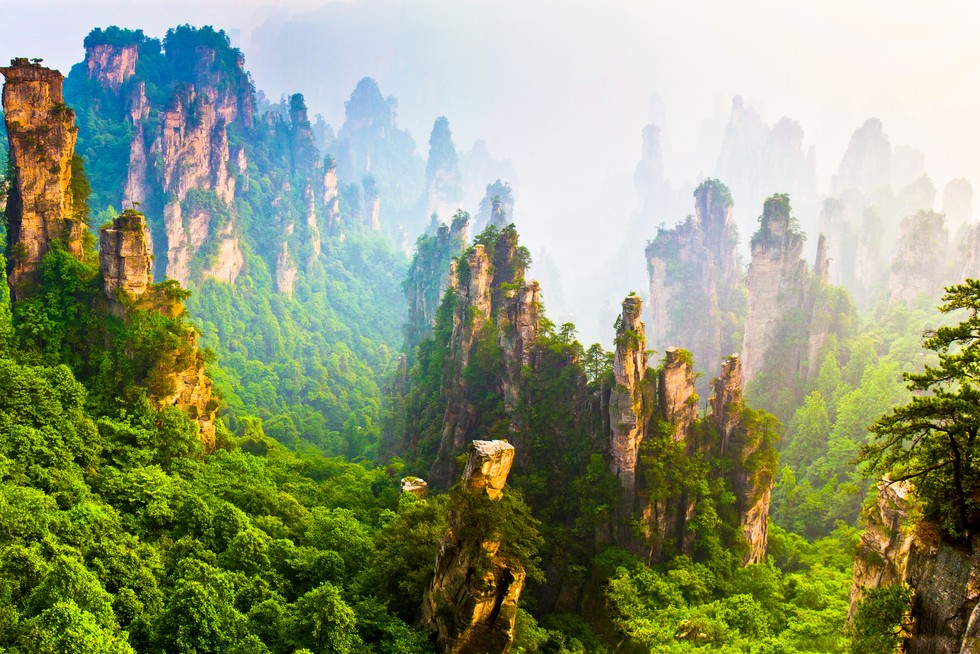
Reasons for the loss of wild places
The tropical forests of the Amazon, Africa and South-East Asia are disappearing at the fastest rate. They are being cleared for soybean and oil palm cultivation, or for cattle grazing. This results not only in the loss of habitats for thousands of species, but also in increased carbon dioxide emissions.
Cities are constantly expanding. The construction of new roads, motorways, mines and waterways cuts ecosystems into pieces and prevents animals from moving freely.
Global warming causes glaciers to melt, agricultural land to become desertified and coral reefs to die. This means that many species are losing their natural habitats.
Illegal hunting and logging, as well as overfishing of the oceans, are leading to a dramatic decline in the populations of many species. Examples include elephants, rhinos and bluefin tuna.
In the past, the EU has supported the development of the agricultural and fishing industries, which has contributed to excessive pesticide use, water pollution and overfishing in the Baltic Sea and the North Sea. EU-funded infrastructure development has often cut through areas of high natural value, leading to habitat fragmentation.

Impact on the world
1. Loss of biodiversity
It is estimated that several dozen species become extinct every day worldwide. Not only exotic animals are disappearing, but also small organisms that play key roles in ecosystems.
2. Ecosystem disruption
The extinction of bees and other pollinators could lead to a crisis in agriculture, while the disappearance of forests limits
naturalną produkcję tlenu.
3. Local and social conflicts
People living near wild areas often lose their sources of water and food. This leads to migration and tensions between communities.
4. Loss of the ‘lungs of the earth’
Tropical rainforests are natural carbon dioxide reservoirs. Their disappearance makes the fight against global warming increasingly difficult.
Long-term environmental impacts
1. Acceleration of climate change
The loss of tropical forests and melting glaciers mean that the planet is less able to absorb CO₂ and stabilise the climate. This leads to increasingly violent storms, droughts and fires.
2. Irreversible species extinction
Every species lost is a gap in the food chain. In the long term, this can cause the complete collapse of ecosystems (e.g. the disappearance of pollinators = crisis in food production).
3. Depletion of natural resources
Over-exploitation of the seas and forests will lead to a situation where future generations will not have access to fish, timber or clean water.
4. Climate migration and conflicts
Desertification, water shortages and loss of arable land are already forcing millions of people to leave their homes. In the future, these processes will become increasingly frequent and may cause international tensions.
Examples of human activities that have contributed to the degradation of the last wild places on Earth:
Deforestation
Amazonia, Brazil (2019) – over 10,000 km² cleared
Direct losses: Clearing of tropical forest, destruction of habitats for jaguars, sloths and thousands of plant and insect species.
Long-term ecological effects: Increased CO₂ emissions into the atmosphere, reduced carbon dioxide absorption by vegetation, soil and groundwater degradation.
Impact on biodiversity: Fragmentation of ecosystems, decline in endemic species populations, risk of local extinction of some animals.
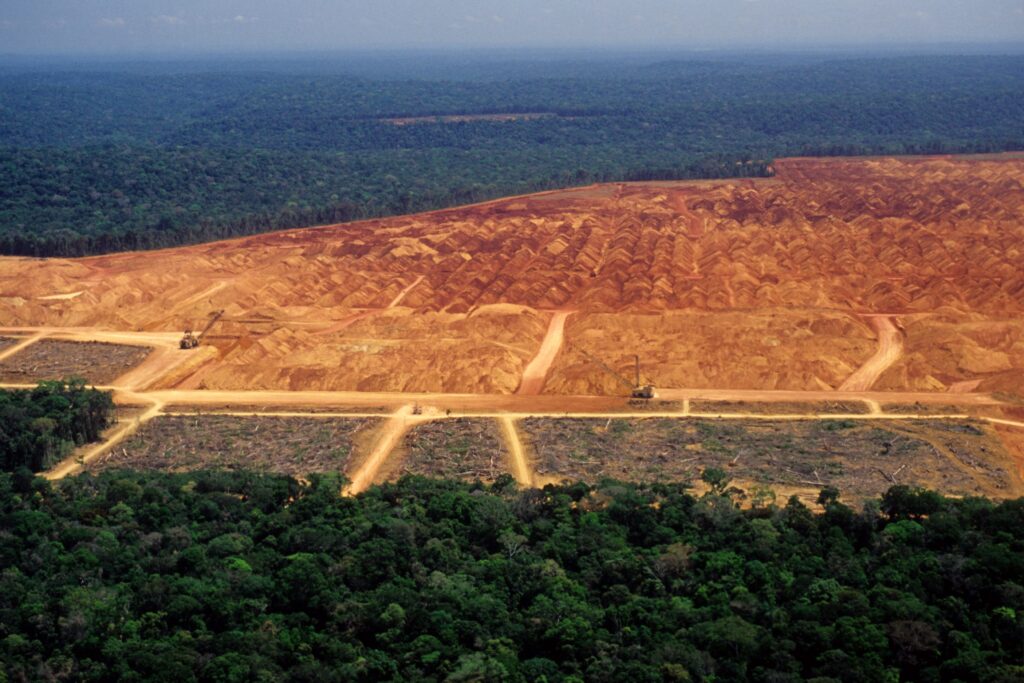
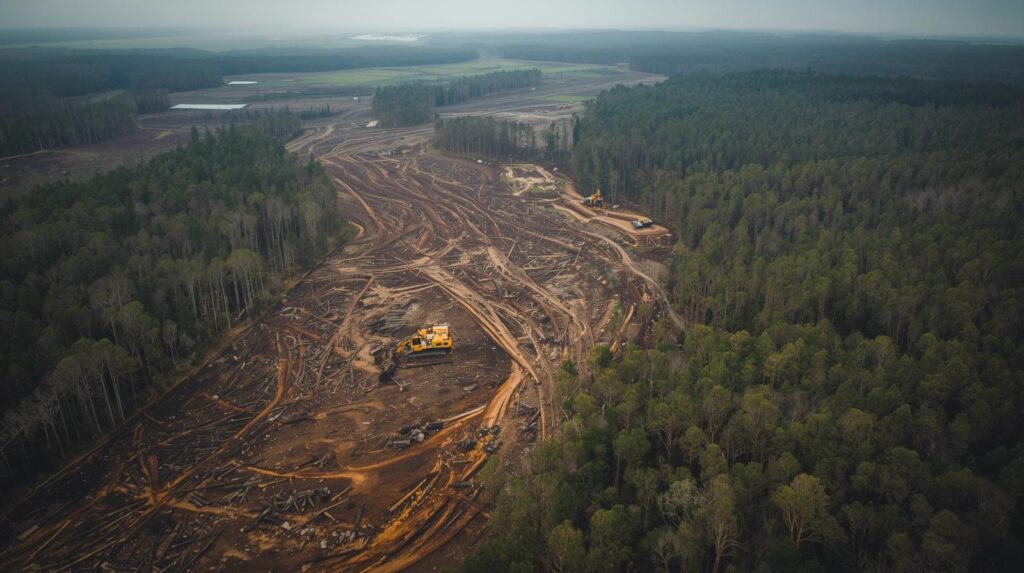
Indonesia (since the 1970s) – loss of over 50% of rainforests
Direct losses: Death of orangutans, Sumatran tigers and elephants; destruction of humid tropical forests.
Long-term ecological effects: Reduction in soil water retention, increased erosion, disruption of the water cycle and local climate.
Impact on biodiversity: Drastic decline in endemic species populations and increased risk of extinction for some animals.
Democratic Republic of Congo (2000–2020) – loss of over 6 million hectares of forest
Direct losses: Destruction of the habitats of lowland gorillas and many plant species.
Long-term ecological effects: Forest fragmentation, reduced CO₂ absorption, increased global greenhouse effect.
Impact on biodiversity: Loss of plant and animal species, weakening of tropical ecosystem resilience.
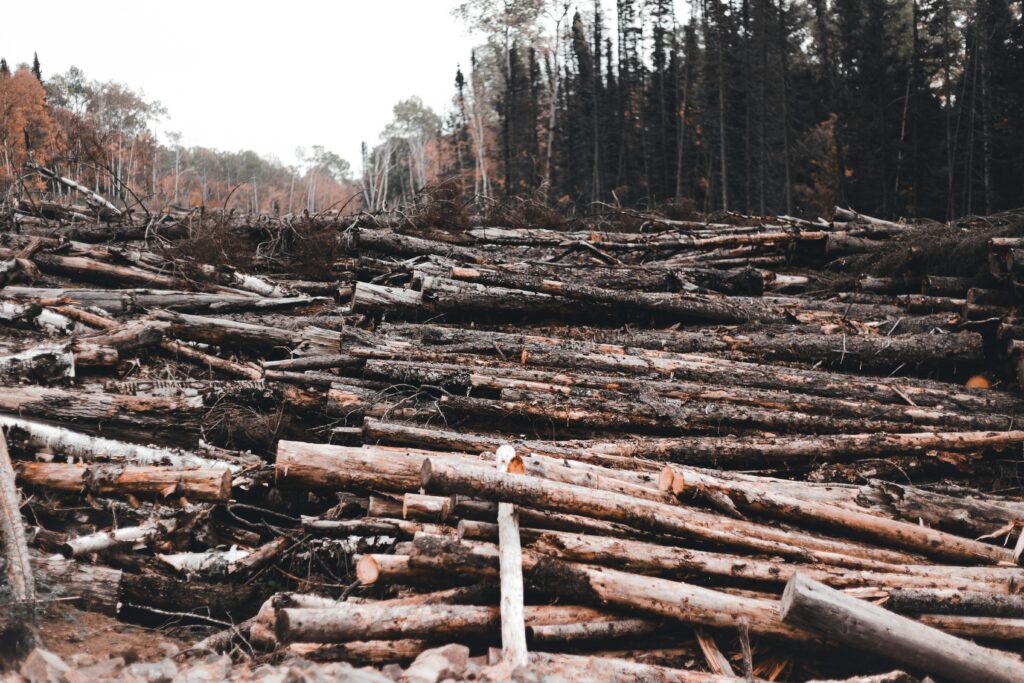
Urbanisation and infrastructure
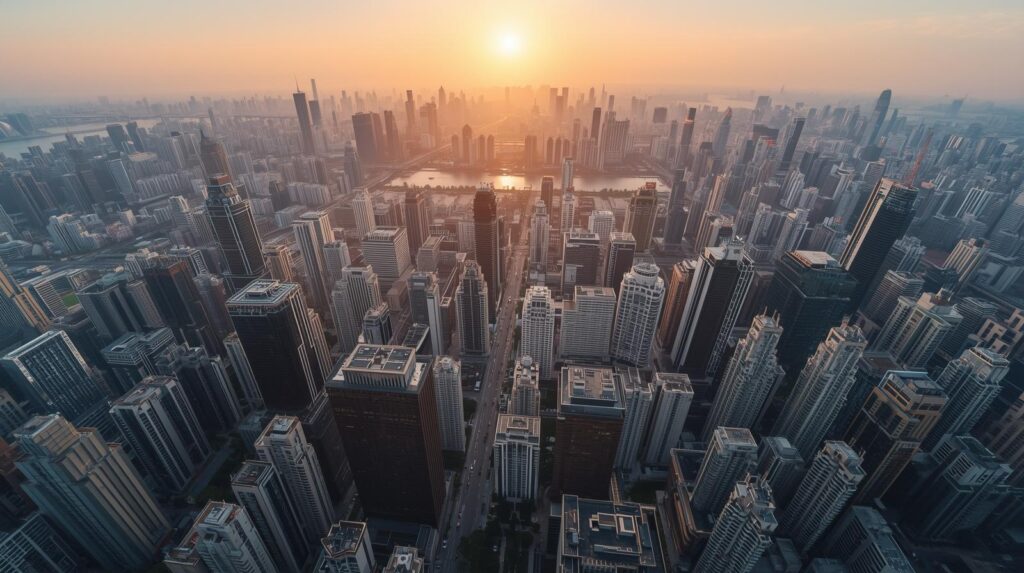
China (1990–2020) – urbanisation increased from 26% to over 60%
Direct losses: Occupation of natural and agricultural areas, destruction of rivers, wetlands and waterbird habitats.
Long-term ecological effects: Change in microclimate (urban heat island effect), increased air and water pollution.
Impact on biodiversity: Decline in animal populations, loss of nesting sites for birds and insects.
Three Gorges Dam, China (2003) – flooding of 600 km²
Direct losses: Destruction of habitats of fish and freshwater mammals, e.g. the Yangtze River dolphin; flooding of villages and agricultural land.
Long-term ecological effects: Change in river hydrology, reduction in water quality, hindrance to fish migration.
Impact on biodiversity: Extinction of freshwater species, disruption of the food chain.
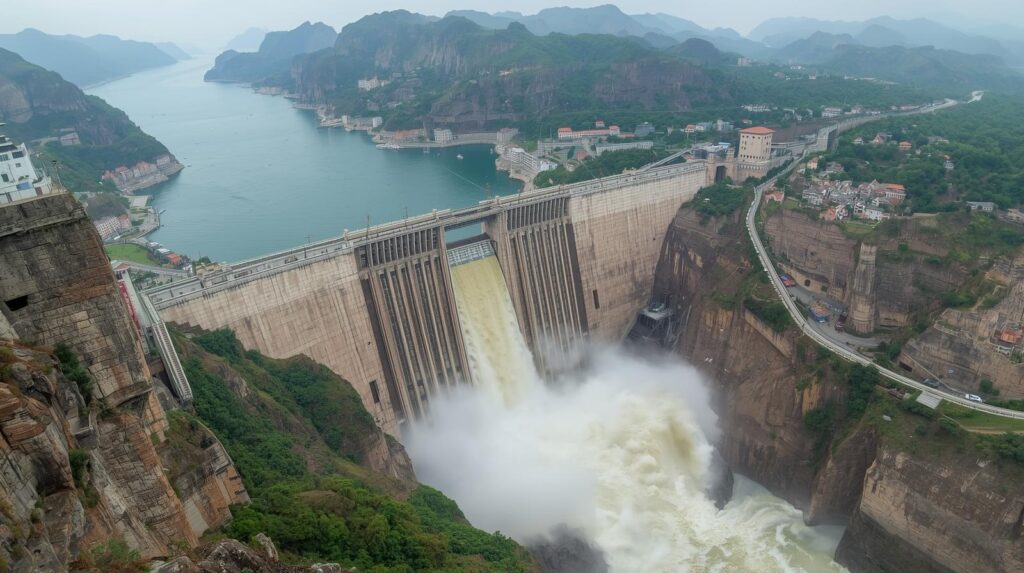
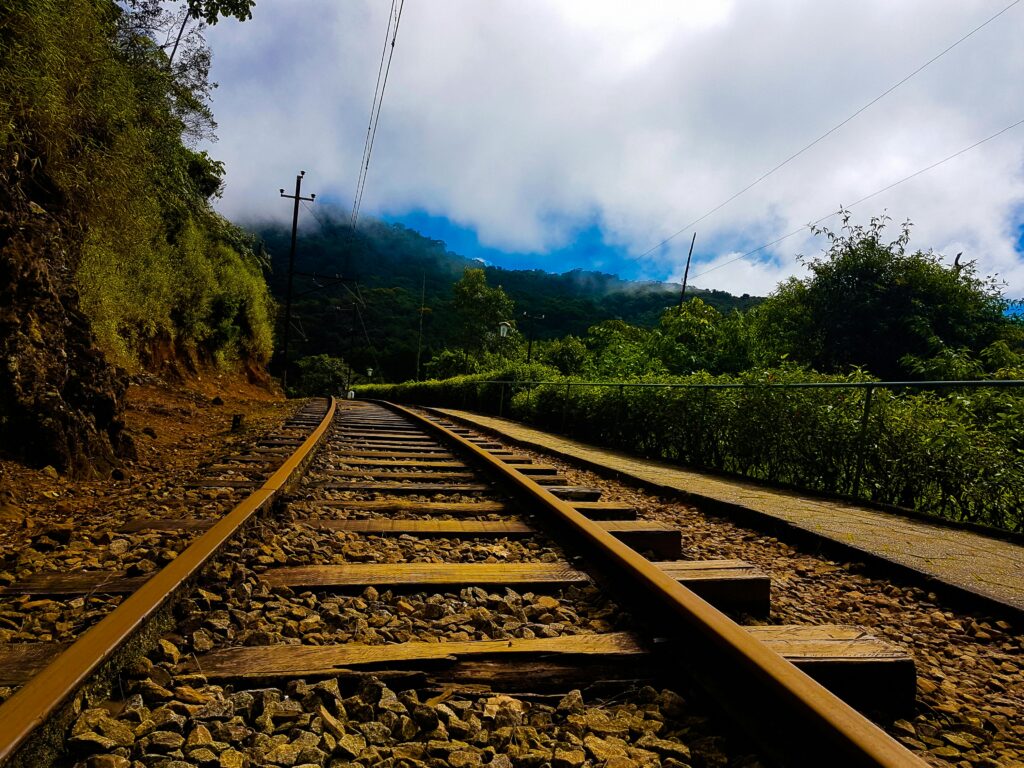
Kenya, Mombasa–Nairobi railway line (2017)
Direct losses: Interruption of elephant migration routes, increased animal mortality as a result of collisions with trains.
Long-term ecological effects: Population fragmentation, reduced access to food and water.
Impact on biodiversity: Weakening of large mammal populations, change in the structure of the savannah ecosystem.
Climate change
Arctic (1979–present) – 13% decline in sea ice per decade
Direct losses: Loss of habitat for polar bears, seals and Arctic birds.
Long-term ecological effects: Acceleration of global warming, melting glaciers, changes in ocean currents.
Impact on biodiversity: Decline in Arctic species populations, loss of genetic diversity
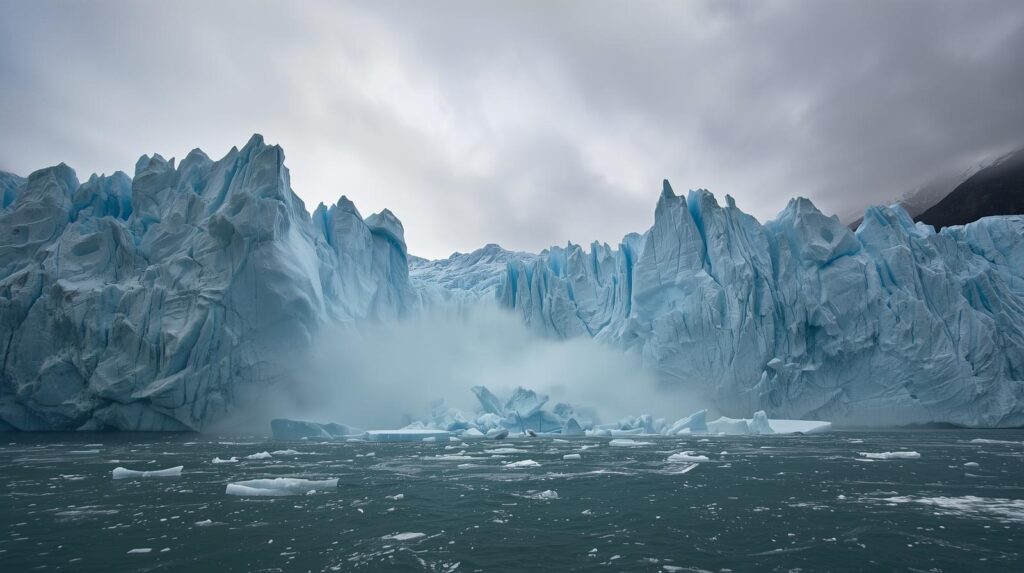
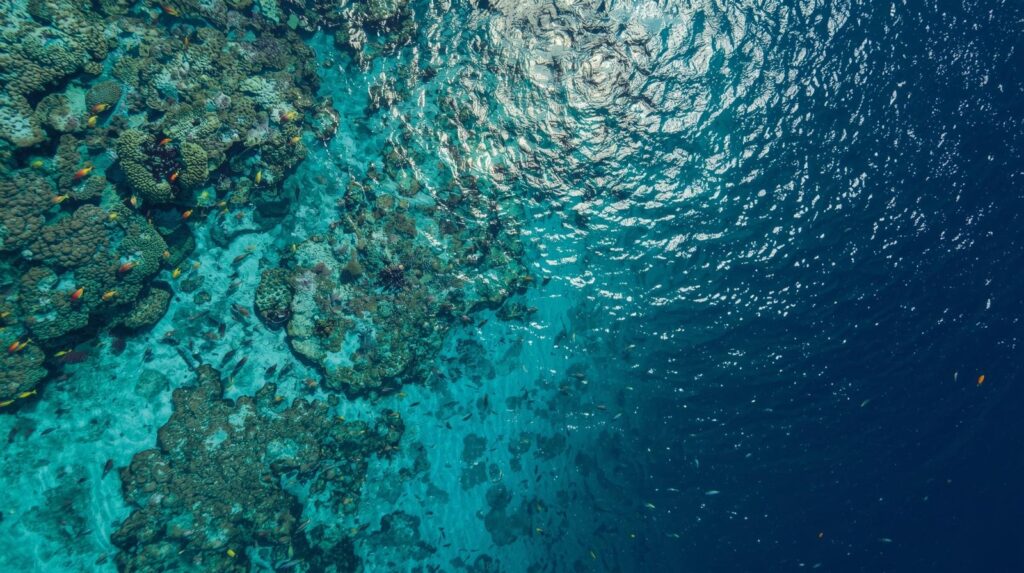
Great Barrier Reef, Australia (1998, 2002, 2016, 2017, 2020)
Direct losses: Mass bleaching and death of corals.
Long-term ecological effects: Reduction in fish and shellfish populations, disruption of the marine ecosystem balance.
Impact on biodiversity: Decline in species diversity, extinction of reef-dependent organisms.
Sahel, Africa (since the 1970s) – desertification
Direct losses: Loss of pasture and arable land, soil degradation.
Long-term ecological effects: Droughts, population migration, deterioration of the local climate.
Impact on biodiversity: Disappearance of vegetation, extinction of local animal species.
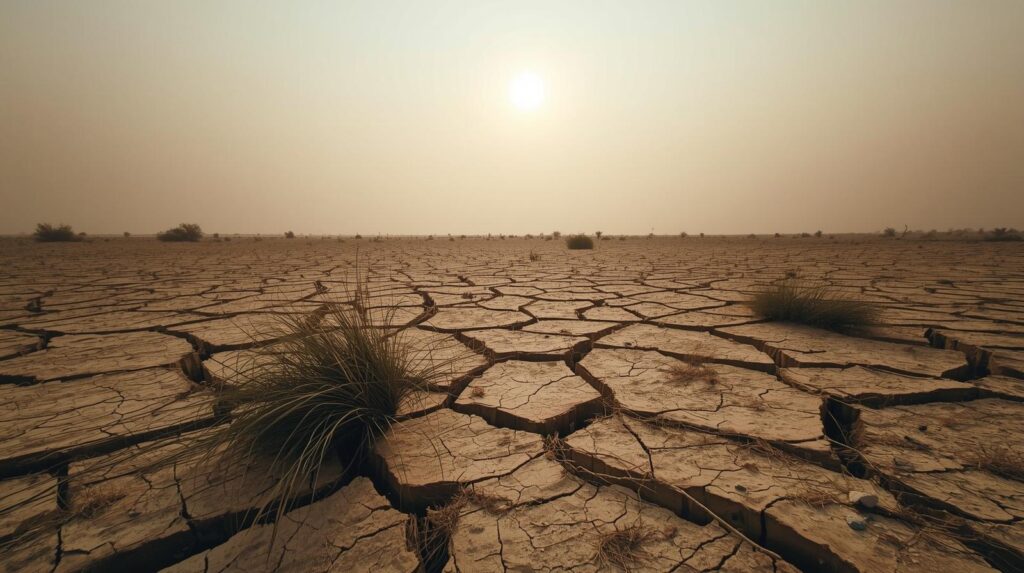
Poaching and over-exploitation
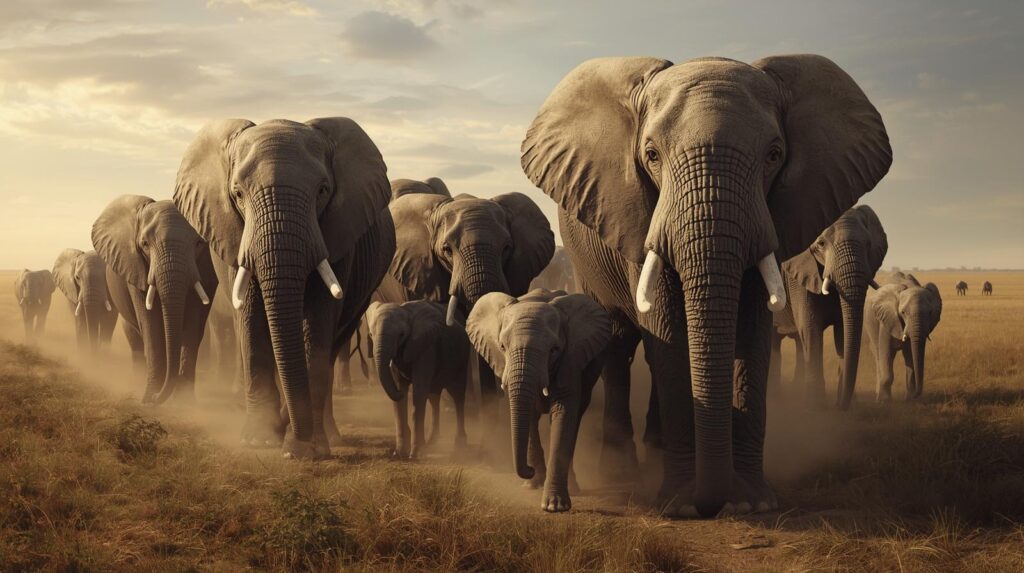
Africa (2007–2014) – over 100,000 elephants killed
Direct losses: Loss of large herbivores, destruction of savannah ecosystem structure.
Long-term ecological effects: Disruption of the plant life cycle (lack of natural plant ‘gardeners’), decline in ecosystem stability.
Impact on biodiversity: Extinction of species dependent on elephants, reduction in biological diversity.
Nepal and India (1960s) – Indian rhinos decline to several hundred individuals
Direct losses: Loss of a key species in the wetland ecosystem.
Long-term ecological effects: Change in vegetation, weakening of the ecosystem, lack of ‘ecosystem engineers’.
Impact on biodiversity: Decline in the numbers of other species dependent on rhinos, reduction in the resilience of the ecosystem.
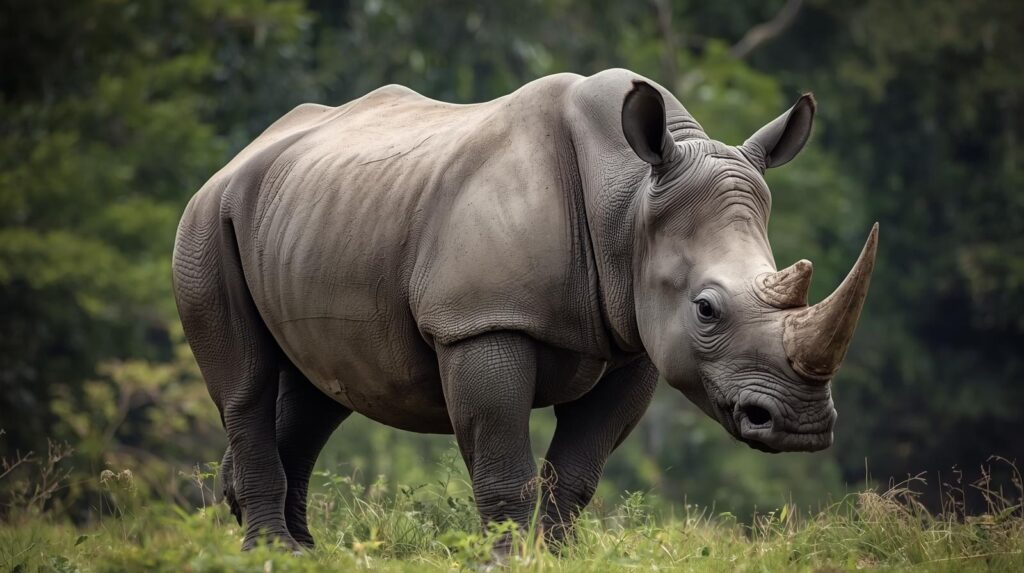

Oceans – bluefin tuna (since the 1970s)
Direct losses: 85% decline in population, loss of resources for humans and other marine species.
Long-term ecological effects: Disruption of the ocean food chain.
Impact on biodiversity: Extinction of fish species, weakening of entire marine ecosystems.
Invasive species
The introduction of alien species into new ecosystems leads to the destruction of local flora and fauna.
Goldfish in Australia – released into rivers, they have dominated aquatic ecosystems, displacing local species.
Consequences: ecological imbalance, decline in biodiversity, extinction of local species.
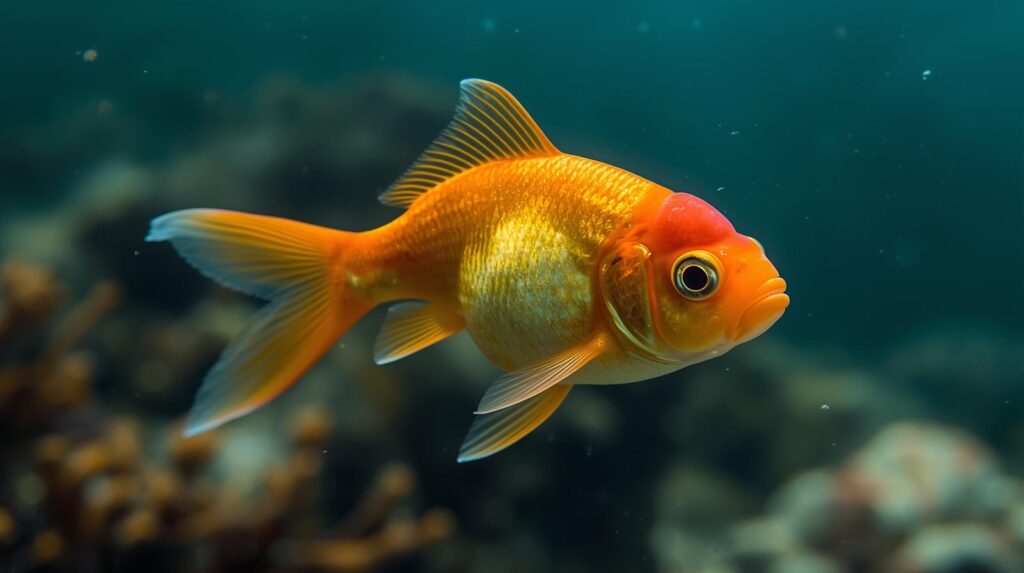
Forest fires
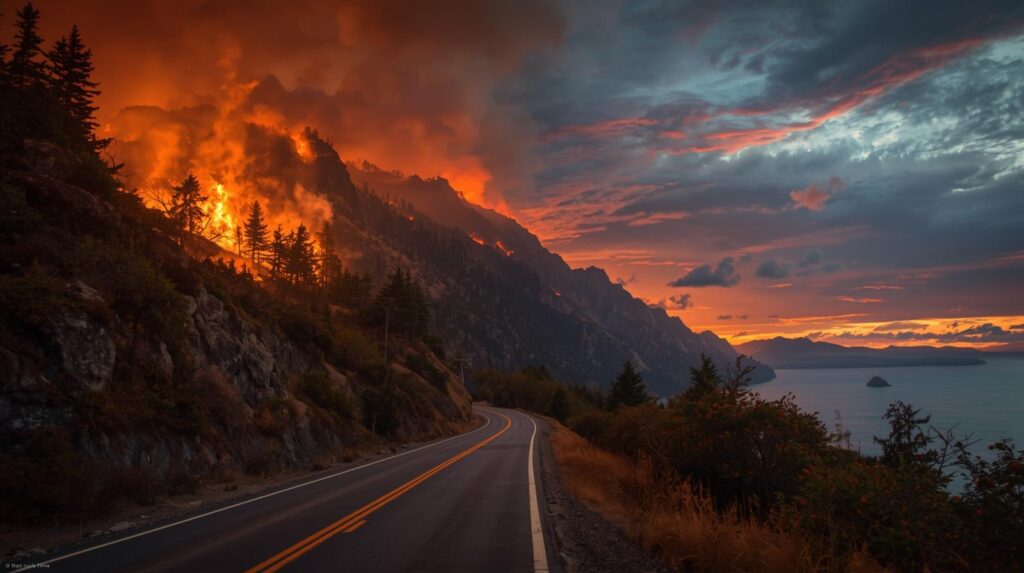
Fires, both natural and man-made, destroy vast areas of wilderness.
Greece (2021) – fires destroyed thousands of hectares of forest and forced residents to evacuate.
Australia (2019–2020) – hundreds of millions of animals were killed and thousands of hectares of forest were burned.
Effects: CO₂ emissions, habitat loss, decline in biodiversity, soil erosion and changes in the local climate.
How is the world fighting for the last wild places? Preventive measures
Preventive measures to protect the last wild places on Earth are key to ensuring biodiversity survival and ecosystem stability. They include a range of measures and practices aimed at reducing human pressure on the environment and minimising its long-term effects.
1.The world is fighting for the last wild places by creating and expanding protected areas such as national parks and reserves, e.g. the Ross Sea Reserve in Antarctica.
4.Endangered species are protected through reintroduction and monitoring programmes, which have saved, among others, European bison in Europe and Indian rhinos in Nepal.
2.Sustainable agriculture and fishing are becoming increasingly common, as evidenced by certifications such as MSC and Rainforest Alliance.
5.Global climate actions, such as the 2015 Paris Agreement, aim to reduce greenhouse gas emissions and develop renewable energy sources.
3.Education and increased public awareness are encouraging people to get involved in nature conservation, for example through recycling, reducing plastic use and participating in environmental campaigns such as Fridays for Future.
6.An important element is the support of local communities, which are increasingly developing ecotourism and benefiting from programmes that support ecological farming and fishing methods.
Organisations working to protect wildlife
WWF works worldwide to protect wild animals, their habitats and endangered ecosystems. The organisation runs programmes to protect tigers in Asia, elephants in Africa and to restore tropical forests in the Amazon and Indonesia. WWF’s methods include field projects, environmental education and cooperation with governments and local communities.
Greenpeace operates globally, organising campaigns to protect forests, oceans and the climate. It fights environmental pollution, promotes renewable energy and conducts educational campaigns. Examples of its activities include protecting boreal forests in Canada, combating coral bleaching and reducing plastic in the oceans.
TNC focuses on protecting land and water, preserving biodiversity and restoring ecosystems. The organisation reintroduces species, restores wetlands and forests, and protects fish migration routes. TNC works with local communities and scientists, purchases land for conservation and runs educational programmes.
CI works to protect the world’s most valuable natural areas by combating deforestation and ecosystem degradation. Protecting the Amazon rainforest, restoring coral reefs, and supporting communities living in reserves are some of their activities. The organisation conducts scientific research, provides education, and collaborates with governments and other international organisations.
How to rebuild damaged infrastructure in remote locations
Accurate inventory of damage – checking which roads, bridges, buildings, power lines or water systems have been damaged.
Risk analysis – identifying which areas are most vulnerable to further disasters (floods, fires, landslides).
Use of local and environmentally friendly materials – FSC-certified wood, concrete with a lower carbon footprint, recycling of materials.
Disaster-resistant design – flood-resistant bridges and roads, buildings with fire protection systems.
Drones and satellites – monitoring damage and progress in reconstruction.
GIS and mapping – planning roads, water and energy networks with nature conservation in mind.
Smart systems – automatic sensors monitoring water, temperature and ground movements, which increase the resilience of infrastructure.
Government funds and insurance – rebuilding infrastructure in towns, villages and nature reserves.
Involvement of local communities – residents can help rebuild and maintain infrastructure, as well as protect nature.
Training local teams – learning how to rebuild and maintain disaster-resistant infrastructure.
Prevention plans – e.g. creating escape routes, fire and flood warning systems.
Monitoring and maintenance – regular inspections to prevent damage from accumulating over time.
Summary
The last wild places on Earth are a priceless treasure that cannot be recreated. Every plant and animal lost is a step towards the impoverishment of the planet. Human pressure is enormous, but preventive measures – from creating reserves and protecting species, through global climate agreements, to the everyday choices each of us makes – give hope for the preservation of biodiversity. Our future depends on whether we can protect the last wild places for future generations.
